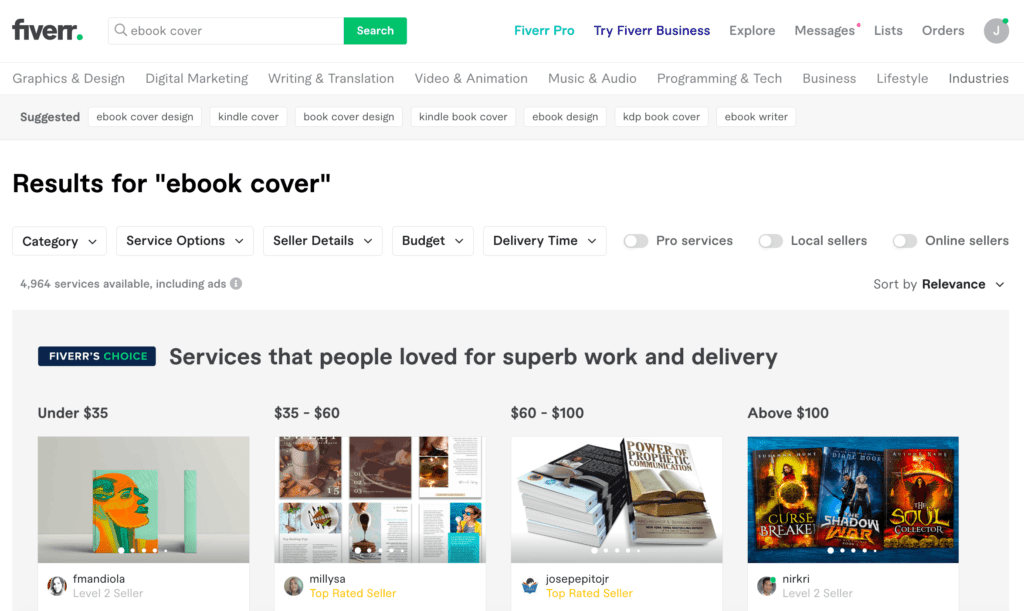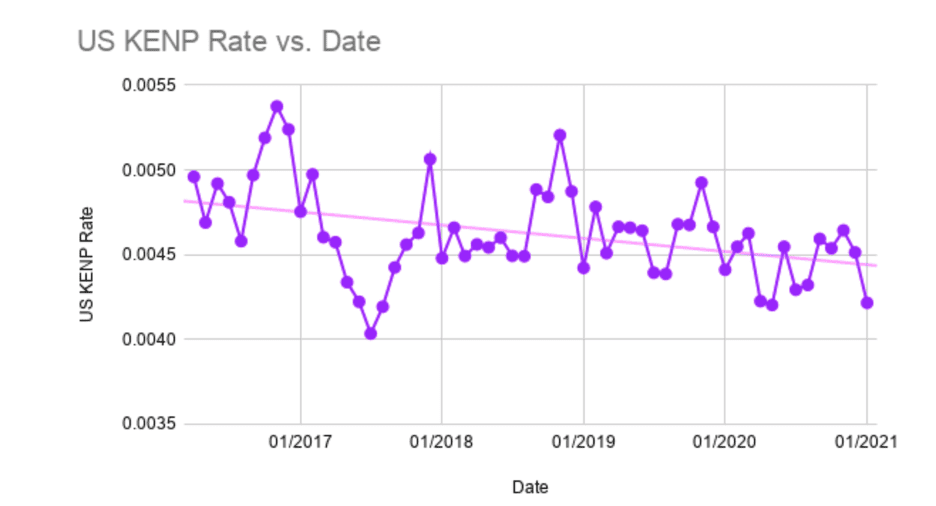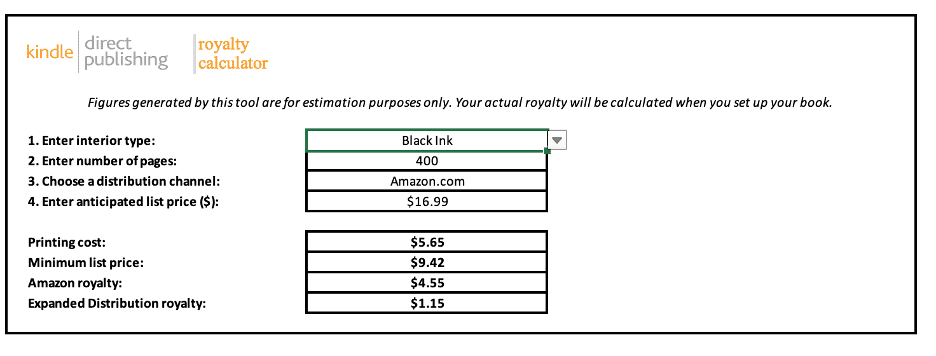

The best time to write an ebook was 10 years ago. The next best time is now. Amazon’s Kindle has been around since 2007, and the wild west days of self-publishing when anyone could publish an ebook and become an overnight success are gone, but you can still earn valuable revenue, promote yourself as an expert and edupreneur, and maybe even become rich through self-publishing via Amazon, Barnes & Noble, Apple Books and more.
In this post, I’ll show you how to plot and write a book, review the best ebook formatting software available, and explain why you should still be writing ebooks in 2022.
How to write an ebook
If you’re an edupreneur, you’re likely already at an advantage over many first-time authors. If you’ve already created an online course, you know how to teach your subject over a series of lessons (chapters) and guide learners from A-Z in a logical way. That’s exactly how a book works too, so there’s no reason not to use an existing course as a framework for your ebook.
If you haven’t created a course yet, the first thing you need to do is structure and plot your book. All books need plots, not just fiction, in order to guide the reader as they read. There are all kinds of guides to plotting books, from elaborate 27-chapter outlines that nail down every detail, to glorified bullet point lists that provide a touchstone to keep the author on track. Non-fiction authors usually find it easier to create a chapter-by-chapter outline in order to deliver information in the right order and make research easier to conduct.
Begin by summarizing the central concept of your book into a single sentence. “Teaching new dog owners how to train their puppy,” or “Learn Python in six weeks.” However complex your subject or however sweeping your idea, you should be able to isolate the core theme of your book — if you can’t do it, how will your readers?
Once you’ve established your central concept, consider your readers’ journey. Are they complete novices to your field, or is your book aimed at people who have prior knowledge about your subject? What is their starting point? Write that down next. Then write down what new skills or knowledge they should have gained by the time they finish your book.
For example, a puppy training book could be aimed at brand new pet owners, and by the end of the book they’ll be able to teach their dog to walk obediently on a leash, sit, stay, and fetch. A book about learning the coding language Python might have a higher barrier to entry, aimed at people who already know their way around a computer and don’t need every little detail spelling out for them.
Knowing your target reader is vital to getting your message right. Nobody wants to read a book that is too complex for them to follow, but equally if you talk down to your audience, they’ll soon stop reading.
In just three simple steps you’ve established what your book will be about, who it’s aimed at, and what they’ll learn by reading. Now jot down the steps your readers need to take to get from beginning to end. These will be your chapters. For example:
Core concept: To teach new dog owners how to train their puppy
Target reader: First-time puppy owners
End goal: To teach their dog to walk obediently on a leash, sit, stay, and fetch
Steps:
- How to bond with the puppy
- Introduction to training methods
- Treats and discipline
- Leash training
- Learning to sit
- Learning to stay
- Learning to fetch
That’s really all you need to get started, so if you feel confident writing your book from a bare-bones outline, go for it! There’s no right or wrong approach when it comes to writing a book, so find the style that suits you best. Pantsers prefer to rely on brief notes and intuition as they write, while plotters prefer more detailed outlines.
If you’d prefer to add more detail to your outline before you start writing, now is the time to do so. Break down each step into as many sub-steps as it takes to complete. You can make your chapter notes as brief or extensive as you like. Some writers create lists of bullet points, others use stream-of-consciousness notes, while many write out what is essentially a first draft of the chapter. Experiment with different styles of note making to find the plotting method that suits you best.
Once your plot is finished, it’s time to write.
Producing a book can be daunting — while some writers can finish 100,000 word drafts in just a few weeks, others will take months, or even years to finish their book. When you self-publish, there’s no deadline and no editor at your back demanding progress reports, so you have the freedom to take as long as you like. However, that doesn’t mean you have to agonize over every last word and comma. Have the discipline to actually write when you get the chance, even if it’s just a few hundred words per week, and to be satisfied with “good enough” and know when to move on.
Revising and editing your ebook


Okay, so you write an ebook. Once you’ve finished your first draft, it’s time to make your book better. One of the major complaints about ebooks is the low quality of many of the books available. That’s a side-effect of the democratized publishing process on platforms such as Amazon and Apple Books — there’s nobody to tell you that your book is riddled with typos, so if you don’t see them, it’s easy to publish your book thinking it’s brilliant.
The cold, hard truth is no first draft is brilliant. Ever.
If you have the luxury of time, the best thing you can do with your first draft is file it away on your computer and forget about it for at least a month, preferably longer. Give yourself time to forget what you’ve written so that when you return to it, you’ll be able to re-read it with fresh eyes. This is critically important because our brains are wired to problem-solve in real time. If you’ve skipped a word or made a typo in a sentence that your brain recognizes, you’ll more than likely never notice because your brain will correct the mistake faster than you register seeing it.
If you don’t want to wait to publish your ebook, you need to enlist readers who can help you find mistakes. In publishing these are known as “beta readers,” the people who read your book and provide feedback before it’s released on general sale. Call in favors from friends, family, and learners. The more beta readers you have, the more errors will be weeded out. Make sure that your readers will actually critique your book, not just tell you it’s amazing. You need to know if a chapter is dragging, a point is unclear, or your sentence structure is messy. Leave the praise for paying readers and ask your beta readers to be merciless with their criticism.
Prepare yourself for this feedback, because criticism is hard to hear. You don’t need to take every beta reader’s advice on board, but you should be prepared to listen to it all with an open mind. If you have several beta readers, you can look at similarities and patterns in their feedback to spot where you’re going wrong. Readers might disagree about the phrasing of a specific sentence, but if several beta readers tell you that the same section needs work, you need to take that advice seriously.
Once you’ve finished revising your book based on the feedback from your beta readers, it’s time to edit your work. If you intend to publish professionally and compete on an equal stage with books from Random House and Bloomsbury, your book must be written to the same caliber. That means hiring an editor.
The good news is many professional editors are available for freelance projects. You can use sites like Upwork to find them. Depending on the type of editing your book requires, and the professional reputation of the editor, expect to pay $0.01 – $0.05 per word. That means a 50,000 word book will cost $500-$2500 to edit. Expect to pay somewhere in the middle of that range for a good editor with prior experience.
Types of book editing
One of the key factors that will affect editing costs when you write an ebook is the type of editing service you require.
Copy editing focuses on the text itself and the words you use. Copy edits will find typos, homophones (e.g. read/reed, or brake/break), and spelling errors. A copy editor will also clean up your grammar and punctuation. If you’re satisfied with the overall writing and direction of your book, hire a copy editor to ensure it’s free from errors before publishing.
If your book needs more work, or you’d like guidance to improve your writing, consider a line editor instead. Line editing is a form of structural edit that reviews how you convey your message and pace your book. The flow, tone, and style of your writing are the focus for line editors. A line editor can provide feedback on how to tighten your narrative, improve sentence structure, and help with the overall construction of your book. Note that once a line editor has finished with your book, you might still need to hire a copy editor or proofreader to check your word usage and search for typos.
The most extensive type of editing is called developmental editing. Developmental edits are usually carried out early into the drafting process, and review the overall plot, structure, and pacing of the story. If you start plotting and find yourself struggling to marshal your ideas into a coherent outline, a developmental editor can help. Again it’s important to note that after writing a book with the aid of a developmental editor, you may still need a line and/or copy editor to get it ready for publication.
The last stage of preparation for publishing is proofreading. Proofreaders take the finished, edited manuscript, and give it one last read through looking for typos and other errors (yes, they still slip through, even after several rounds of editing!).
The more beta readers you have, and the better their feedback, the less editing your book is likely to need. Many authors are able to rely on just a copy editor or experienced proofreader if the book has already undergone extensive beta reading and revisions. Whatever editor you hire, ask to see examples of books they’ve previously edited, and read them with an eye for spelling, grammar, and sentence structure. Many editors will offer to do a sample edit of a couple of pages of your writing so you can get a feel for each other’s style and decide if you want to work together.
As tempting as it might be, don’t try to self-edit your book. You can’t fix mistakes if you don’t see them, or don’t know that you’re making them. Even the best writer will make errors, and you need a second, knowledgeable pair of eyes in order to catch them all and make your book as good as it can possibly be.
Formatting your ebook


Once your manuscript is complete, it’s time to create the ebook files that will be distributed for sale. You can format your book using Microsoft Word (the Smashwords Style Guide by Mark Coker is a great introduction to formatting using Word, although it’s been around for a few years and isn’t completely up to date anymore), or you can use a formatting service to create attractive ebook files for you. Vellum is considered the easiest and best formatting software for Mac users. Windows users can download Calibre, an ebook management software that has conversion and export features, or use Scrivener, a writing software that will export ebooks. Alternatively, web-based applications such as Chapterly provide export features as well as plotting and writing tools.
As an ebook, your book will be published in two major formats, .mobi (for Amazon) and .epub almost everywhere else. Some retailers also offer PDF versions. Amazon will convert Word documents into .mobi files automatically, so if you only intend to publish through Amazon you don’t need to format your book. However, the files Amazon will create are very basic, and formatting software will allow you to include decorative scene breaks and other niceties.
A third option when you write an ebook is to hire a formatter who can create your book to your specifications. For non-fiction authors who want to include charts, diagrams, and footnotes, this option is especially appealing. Formatting costs vary wildly, but expect to pay around $100-$500 for a professional formatting service. As with editing, ask to see examples of a formatter’s work before you agree to hire them.
Ebook covers
Finally, your book needs a cover. Retailers such as Amazon include cover design software in their uploading tools, but those covers aren’t very good and you shouldn’t rely on them for your book. Instead, you can either make a book cover yourself, or hire a graphic designer to create a cover for you.
Although it seems obvious, if you’re creating a cover yourself, it needs to have the correct dimensions. That’s usually a ratio of 1.6:1, meaning the long side should be 1.6 times the length of the short side. Amazon recommends 2560 x 1600 pixels at minimum, with a resolution of 72 dpi (dots per inch) or higher. If you intend to turn your ebook into a print book with the same cover, make sure it has a resolution of 300 dpi, as that’s the minimum requirement for printing.
Ebook covers can be designed in any photo editing software. InDesign, Photoshop, and GIMP are all popular. You can also use online services such as Canva. If designing a cover, even with templates like those on Canva, simply isn’t your thing, then consider using a service like 99Designs or Fiverr. You can get a really professional looking cover at a rate that is well worth it for the difference it will make in attracting potential readers.


To find image(s) to use on your cover, you can browse free libraries such as Unsplash or Pexels, or purchase stock images from sites such as iStock or Shutterstock. Check the terms of the license you use if you select an image with a cover model, as there may be restrictions on the use of their likeness, and they should include a model release form.
Platforms for publishing your ebook
Now your book is ready for publication, there are several platforms where you can upload your files and make your book available for sale. These are the top choices.
Amazon KDP
Amazon is the primary site where most authors find success with ebooks. About two thirds of all ebooks are sold via Amazon, so it’s a platform you really need to be on if you want your book to reach the largest audience. Amazon enables authors to upload their books via their Kindle Direct Publishing platform. You can set your own price, but the royalty rate for ebooks will change depending on how much the book costs.
| BOOK PRICE | ROYALTY RATE | ADDITIONAL FEES |
|---|---|---|
| Free | 0 | 0 |
| $2.98 or lower | 35% | 0 |
| $2.99-$9.99 | 70% | $0.15/MB download fee |
| Over $10 | 35% | 0 |
You can’t set your book as free on Amazon unless it’s already listed for free elsewhere. Apple Books allows you to upload free titles, as do ebook distributors such as Smashwords and Draft2Digital. If you want to reach the widest possible audience with a loss-leader, you can make your book free on major platforms and prompt Amazon to price match.
When your book is listed in the 35 percent royalty bracket, there are no download fees applied for delivering your book to readers. At 70 percent royalty, you will also pay a small fee for this service. Even large books will rarely cost more than a few cents to deliver, unless they’re very image-heavy. If you want to use a lot of photographs, tables, charts, and other media in your book, it’s a good idea to check the size of the final file. If your book file is particularly large, you may find you’ll make more money pricing the book in a 35 percent royalty bracket and avoiding paying delivery fees.
Not every Amazon domain offers 70 percent royalties on ebook sales. Although all the major Amazon sites do — USA, UK, Canada, most of the EU, and Australia all offer this option — if you sell a book priced to earn 70 percent royalties in a region where this option isn’t provided, you’ll earn 35 percent instead.
International pricing can be set manually, but by default Amazon will set prices based on the exchange rate from USD. Payments are made 60 days after the month in which sales are reported. For example, if your book makes $1000 in January, you’ll be paid at the end of March. You can choose to be paid by direct deposit, wire transfer, or check. There are no minimum payment thresholds for direct deposits, but wire transfers and checks must be for $100 or more.
Amazon Kindle Unlimited
An additional platform available to Amazon authors is KDP Select. This is an exclusivity agreement where you agree not to publish your book or distribute it in any other way outside of Amazon. In exchange, your book will be made available to Kindle Unlimited (KU) subscribers via the Kindle Owners’ Lending Library (KOLL). On Amazon, the price for these books appears to be $0, making them more attractive to readers.


When your book is borrowed by KU members, you will be paid per page read. Amazon calculates the number of pages in each book using its own formula, so the number of actual pages might differ from the number of Kindle Edition Normalized Pages (KENP) assigned to your book. If a reader borrows your book but never opens it, you won’t be paid anything. If they love your book so much they read it three times in a row, you’ll be paid for each time they read it.
The price per page varies each month, based on the number of subscribers to the KU program and the total number of pages read. In January 2021, the KDP Select Global Fund was $36 million, and each page read was worth $0.004216223. At that rate, a 400-page book would earn $1.69 if read cover to cover.


There are pros and cons to enrolling your book in KDP Select. The rate you will earn is lower per read than most authors make from royalties. When a reader buys your book outright, it also doesn’t matter if they never open it, because you’ve already been paid. To earn money from KU readers, they actually have to read your book. However Amazon actively promotes the KU program and titles, meaning more readers are likely to see your book, and because it’s “free” to them at the point of reading, they’re more likely to take a chance on an unknown subject or author.
Apple Books
In order to self-publish your books with Apple, you need access to a Mac. Apple allows authors to upload books via their iTunes Connect platform, and you’ll be prompted to download Apple’s publishing software, iTunes Producer. Any updates and changes to your book will be made via this program, not the web.
Apple pays a flat rate of 70 percent royalty across all 51 countries where your book will be available. They also offer tiered pricing, so you can calculate international prices based either on the current exchange rate, or adjust for purchasing power in each country. For instance a book priced at $4.99 in the USA is classed as Tier 5. That is the equivalent to 100 Mexican Pesos, but 100 MXN put the book into Tier 10 in that domain. Being able to assess the relative cost of your book, free from the exchange rate, allows you to adjust your rates to stabilize your royalty income without pricing your book out of international markets.


Payments are made via EFT within 30 days following the end of the month. So if you earn $1000 on Apple Books in January, you’ll be paid by the end of February. The minimum payment threshold is $10, so if you make less than this amount the money will roll over until you’ve reached that threshold.
Barnes & Noble
B&N Press is the name of Barnes & Noble’s self-publishing platform. Like Apple, Barnes & Noble offers a flat rate of 70 percent royalty on all books, and payments are made within 30 days of the end of the month.
Draft2Digital and Smashwords
If the idea of uploading your book to several different retailers seems like a lot of hard work, there are distribution aggregators that will simplify the process. The main two are Draft2Digital and Smashwords. Both platforms charge 10 percent on ebook sales but publish to a wide range of retailers, including Apple, Barnes & Noble, Scribd, Kobo, Overdrive, and various other library platforms. Both aggregators distribute to the same sites, so you only need to join one to access the entire network available to self-published authors. Smashwords however also has its own storefront where readers can buy books directly.
Payments are made monthly, but as different platforms pay the aggregators on different terms, it can be harder to estimate your monthly earnings. Neither Draft2Digital or Smashwords distributes to Amazon for any but the highest sellers, so you will need to create an Amazon KDP account and publish your book there separately.
Selling your ebook directly to readers
The final way to distribute your ebook is through direct sales. Services such as Payhip will handle payment processing and delivering digital downloads if you want to automate selling your book through your website or mailing list. The lowest pricing tier only charges a 5 percent transaction fee on sales, so if you don’t sell any books, you don’t pay anything to use the platform. For mid-level sellers, you can choose to pay $29/month for membership plus a 2 percent transaction fee, or high-volume sellers can eliminate transaction fees completely with a $99/month membership.
The advantage to selling your book directly is more money per copy in your pocket, but it means you have to do all the work of marketing your book by yourself. When you sell a book via Amazon, the book moves up the bestseller rankings in several different categories. All of these bestseller lists are available for Amazon shoppers to browse, meaning greater visibility and more sales as a result. When you sell your book directly, only the people you tell about your book will ever know about it, and that can suppress the overall number of copies you sell.


Publishing a paperback book from your ebook
Creating and publishing an ebook is the fastest and easiest way to get your words in print, but once your book is written, there’s no reason not to also turn it into a paperback. Again, it’s Amazon to the rescue of self-published authors. After buying out Createspace, Amazon incorporated their paperback publishing arm into the KDP platform, making it incredibly easy to publish your book in print.
Ebook formatting software often includes the option to generate paperback copies as well, so all you really need to create is a cover. Amazon will calculate the dimensions of the cover you require depending on the trim size of the book (most mass-market paperbacks are 5×8 to 6×9 inches) and the number of pages (which determines the size of the spine). You can use your ebook cover as the front cover for your paperback, meaning you only need to add the spine and back cover.
Amazon KDP pays royalties of 60 percent of net for sales made through Amazon’s marketplaces, and 40 percent of net if you make a sale through the Expanded Distribution network, which makes the book available to a wide range of other retailers. The price of paperback books is typically higher than ebooks, but also has to cover the manufacturing costs, and thus the amount you’ll earn in real terms from each paperback is less than you’re likely to earn from ebooks.
For example, a 400-page ebook priced at $9.99 will earn the author around $6.92 per sale (70 percent of the list price, minus $0.07 delivery fee). The same book sold as a $16.99 paperback will earn approximately $4.55 when sold via Amazon, and $1.15 through Expanded Distribution.


Books created through KDP are printed on-demand, meaning there’s no setup fees involved, and no need to purchase large numbers of books yourself. If you do want to keep some copies on hand to sell yourself, either through your website or at speaking engagements and other functions, you can purchase copies of your book for cost through the KDP dashboard. For the above example, you’d be able to purchase your $16.99 book for $5.65 per copy.
Write an Ebook: Final thoughts
As an edupreneur, writing and publishing a book is a great way to reach a wider audience with your work, and add to your credentials as an educator. Online ebook publishing platforms make it incredibly fast and easy to publish your ebook, and even to create and distribute paperback copies.
While self-publishing is not a get-rich-quick-scheme, and you should be prepared to invest several hundred dollars into creating and formatting your ebook and book cover, ebooks can be reproduced and sold infinitely without incurring any additional costs.
Over time, any edupreneur should be able to realize a profit from an ebook and could even enjoy a new and lucrative revenue stream for their online teaching business.
Title image by Free-Photos from PixabayTable of Contents
